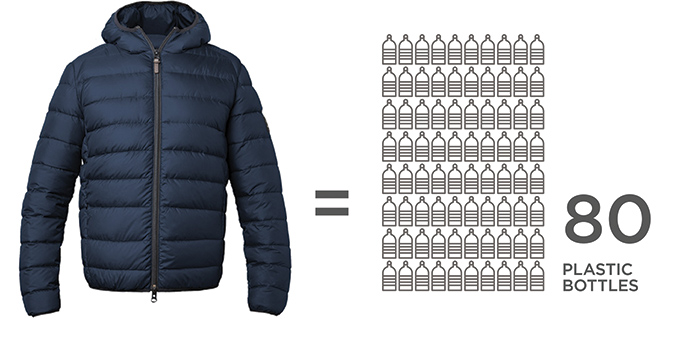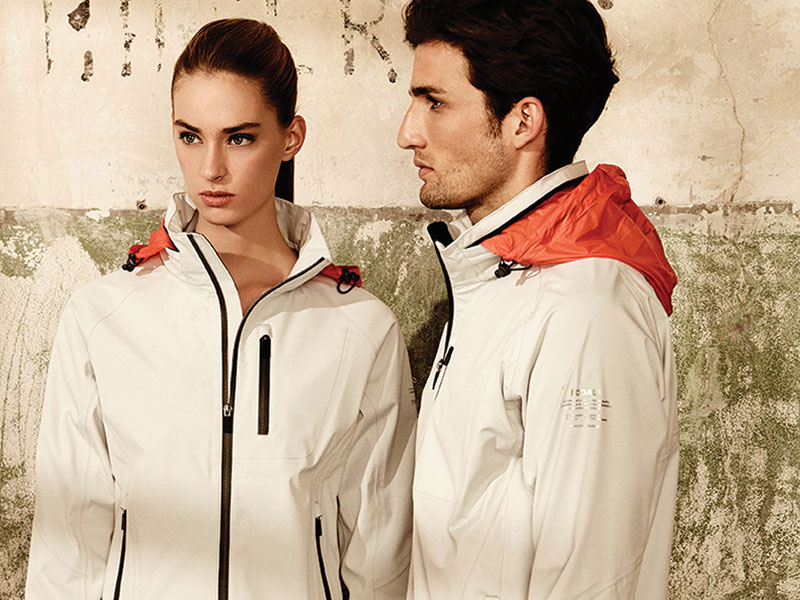If you want the best quality nylon in the world, stop by your local harbor and pick up an old fishing net.
This is the finding of Spanish fashion entrepreneur Javier Goyeneche (pictured above), who in 2009 decided to ditch his mainstream fashion brand and look for inspiration in the trash floating around our oceans. The entrepreneur had become frustrated with designing collections made from polyester fabrics, production of which relied on digging deeper and deeper for oil, and realized there was already a wealth of polyester freely available – the fishing nets discarded by the fishing industry. Goveneche started the ECOALF Foundation and has formed alliances with companies around the world looking to develop breakthrough technologies that allow fabrics to be manufactured from recycled materials.
“The concept of a sustainable fashion brand arose from my frustration with the excessive use of the world’s natural resources and the amount of waste produced by industrialized countries,” says Goveneche. “We currently use five times more natural resources than the planet is able to generate.”
His new venture had nothing to do with fashion at first. He spent three years traveling the world, meeting with inventors, looking for technical knowledge and the chemical processes needed to start his business. Goveneche reviewed dozens of recycling techniques for plastic bottles, discarded fishing nets, used coffee grounds, and even car tires – all potential materials that might deliver a new generation of fabrics that were more Earth-friendly.

“Fishing nets are a huge problem because they need to be replaced every four to six years,” says Goveneche. The problem, however, is less about the replacement cost and more about having to pay the ports to mothball two-mile long nets in warehouses. It’s much cheaper to let them quietly slip into the oceans in the dead of night, when no one is watching.
Goveneche was horrified to learn that there’s a permanent stash of around 65,000 tons of fishing nets on the bottom of our oceans. In the North Sea alone, 40,000 nets choke up the waters and strangle sea life to death.
On the east coast of Spain, Goveneche started an initiative called Up Cycling The Ocean, involving 11 ports and 162 fishing boats. In addition to catching fish, the boats also “catch” between 3 and 6 kilograms of old fishing nets when they haul their nets up. He’s has convinced them to put this into special onboard containers, and at last count, he’d collected 18 tons of old netting.
Last year in Florence, Italy, the first collection of products made with yarn from the bottom of the ocean was presented to the public. “Basically, our fashion brand is a huge research and development program, as the quality of our thread depends on the quality of the trash coming out of the ocean,” says Goveneche.
As each garment in the collection gets designed, it initiates another recycling program. “Our sneaker laces are made from plastic bottles, our fabric from fishing nets. When we added belts and shoes to the range, we needed to start a rubber recycling program. One thing has led to another,” says Goveneche, laughing.

“To make fabrics from discarded fishing nets takes seven chemical steps,” he explains. “Traditional fabric-making methods using raw, virgin materials require 17 steps. There’s a lot of water savings and fewer emissions too, of course.”
Cutting-edge, technical experiments are all very well, but ultimately customers must be attracted to buy cool-looking clothing. While the ECOALF story scores full marks on the enviro-meter, Goveneche is under no illusions that this will be enough to become a profitable business.
“After our chemical engineers are done with the fabrics, our designers make the final products,” says Goveneche. “There’s a misconception that people buy our products because they love nature. But who will buy a jacket that doesn’t fit well or choose a color that isn’t in vogue?”

“Consumers may like your story, but in the end it’s about the fashion. As a business, our price must be right, we need to be in the right stores, and quality must be good,” says Goveneche.
The company has broken-even after three years and Goveneche is looking optimistically at the future. He senses a new generation of brands that are showing that things can be done differently. “Consumers are seeking brands that represent certain values, and that’s our direction,” he says.
“At first, we had to dispel the idea that recycling is something hippie -– where you’d take your grandmother’s old blanket and turn it into a backpack. But that’s not us. We’re about technology and R&D; about plugging into the growing world of ecologically-minded products, such as electrical cars and organic food.”




































